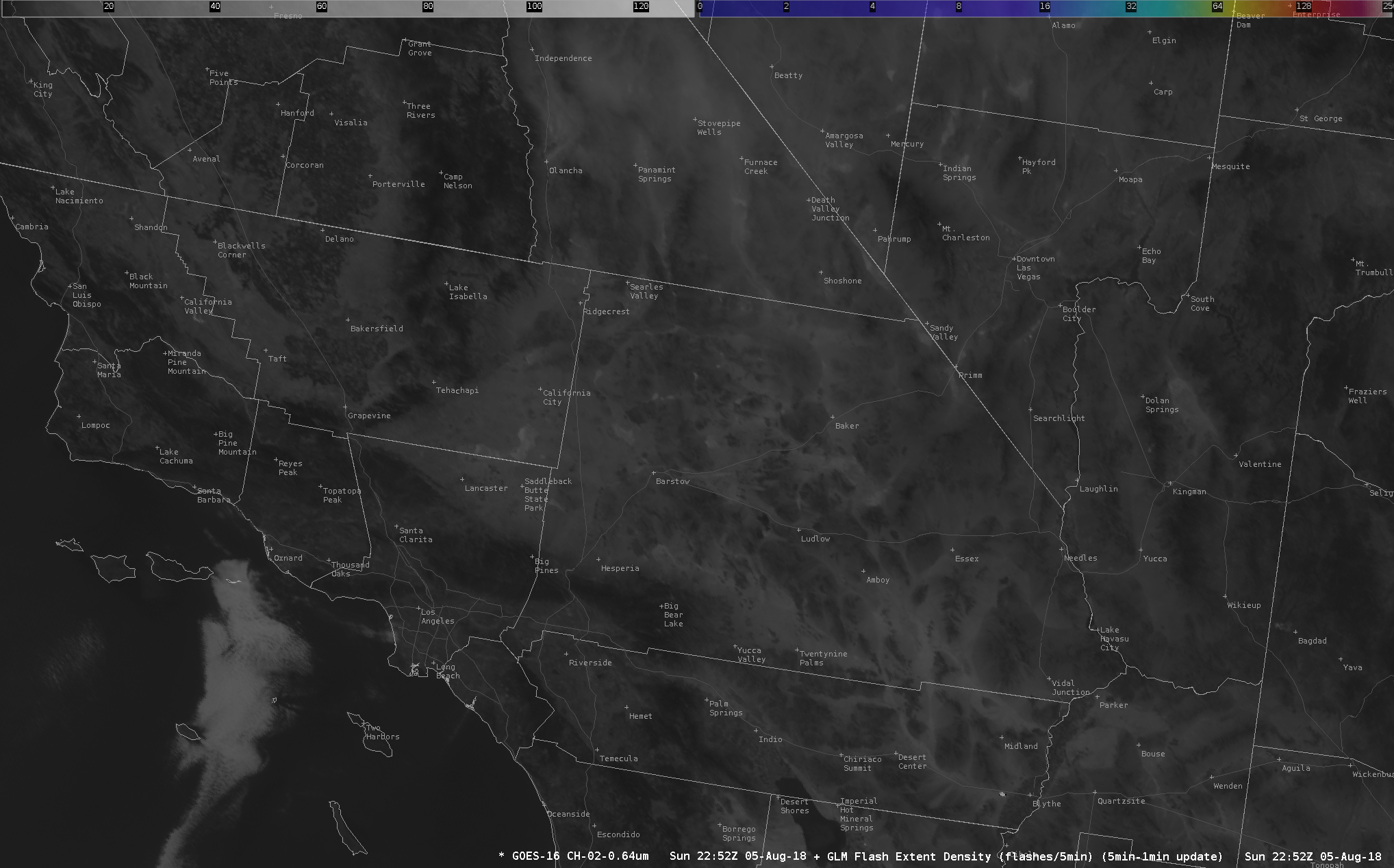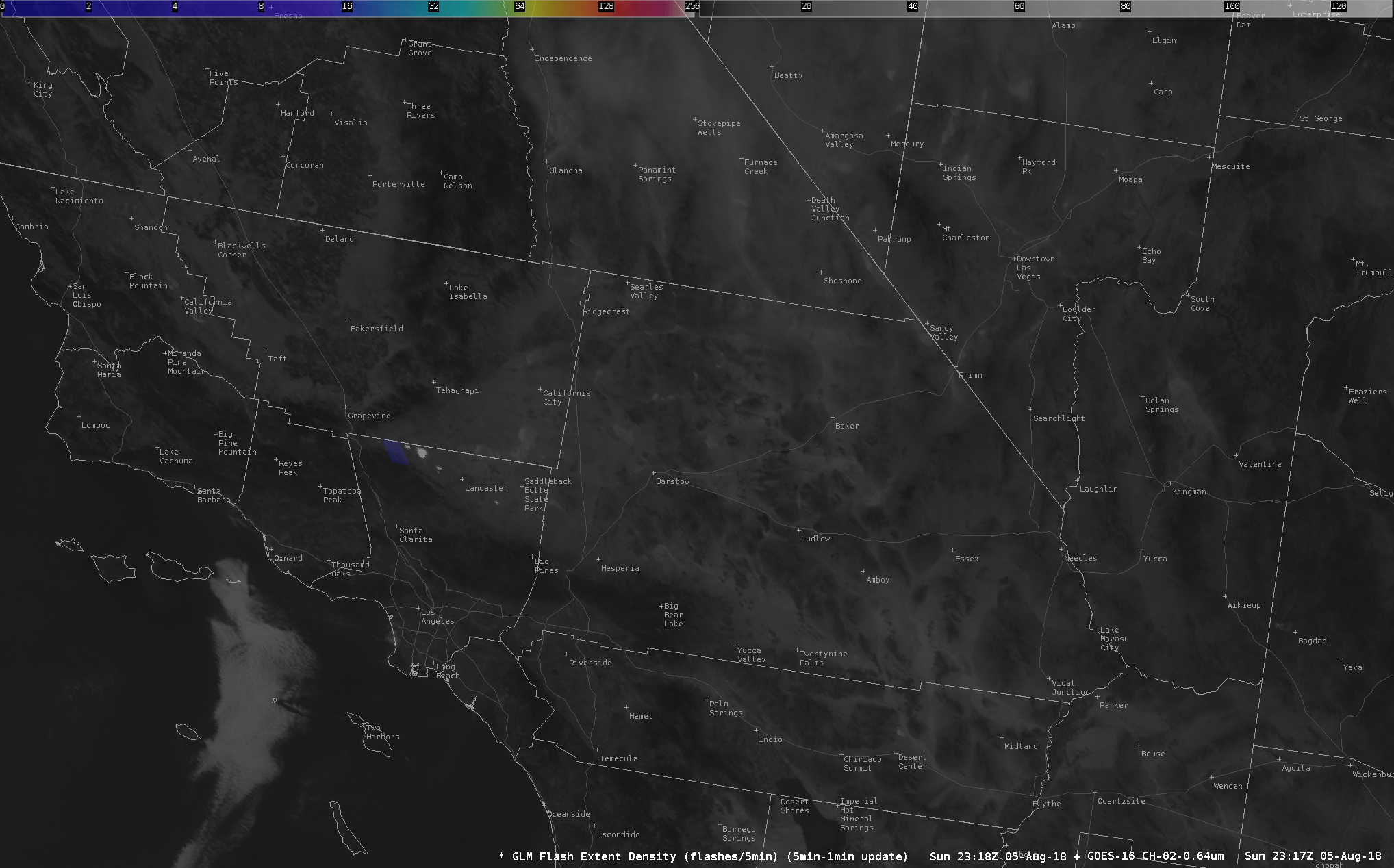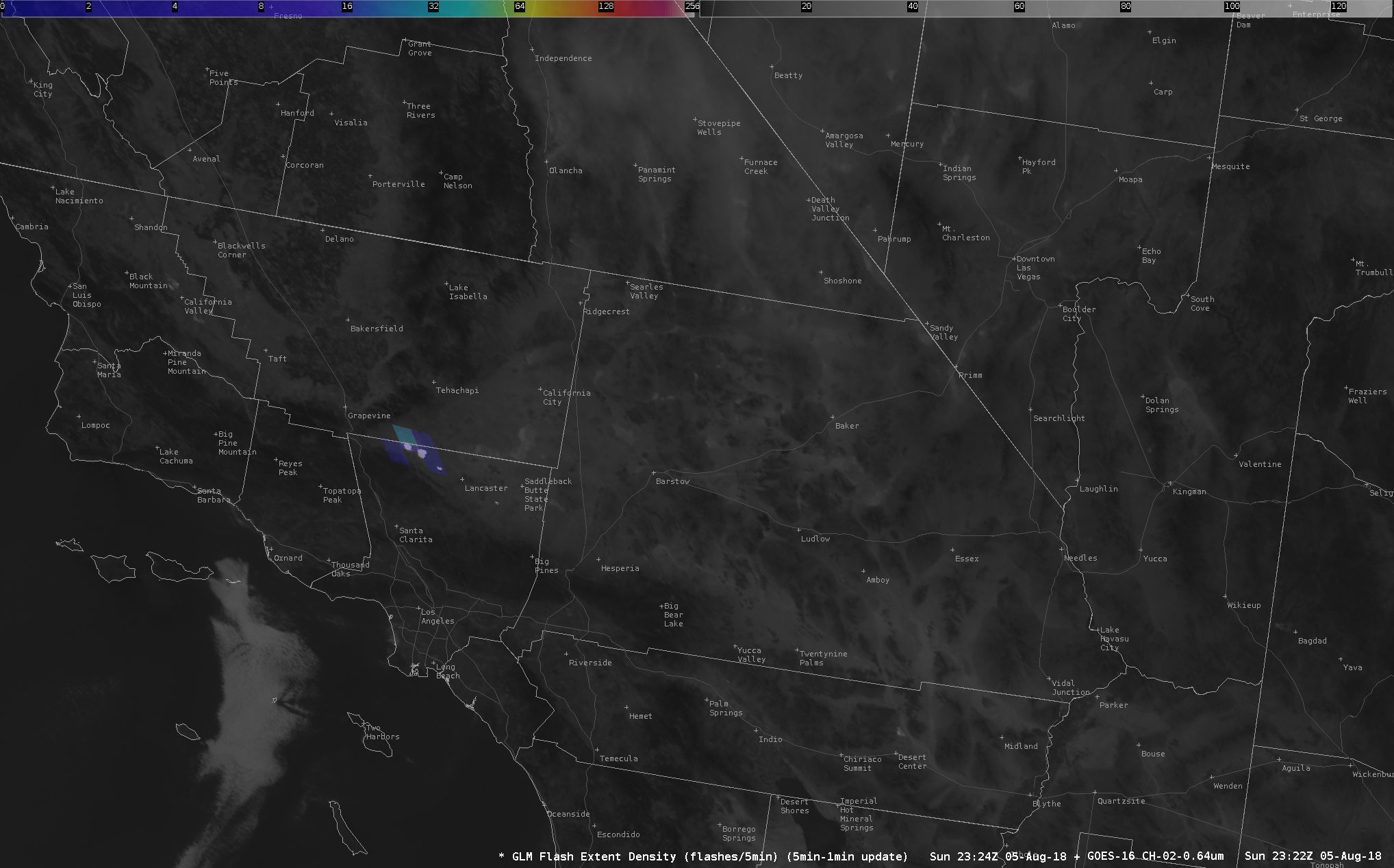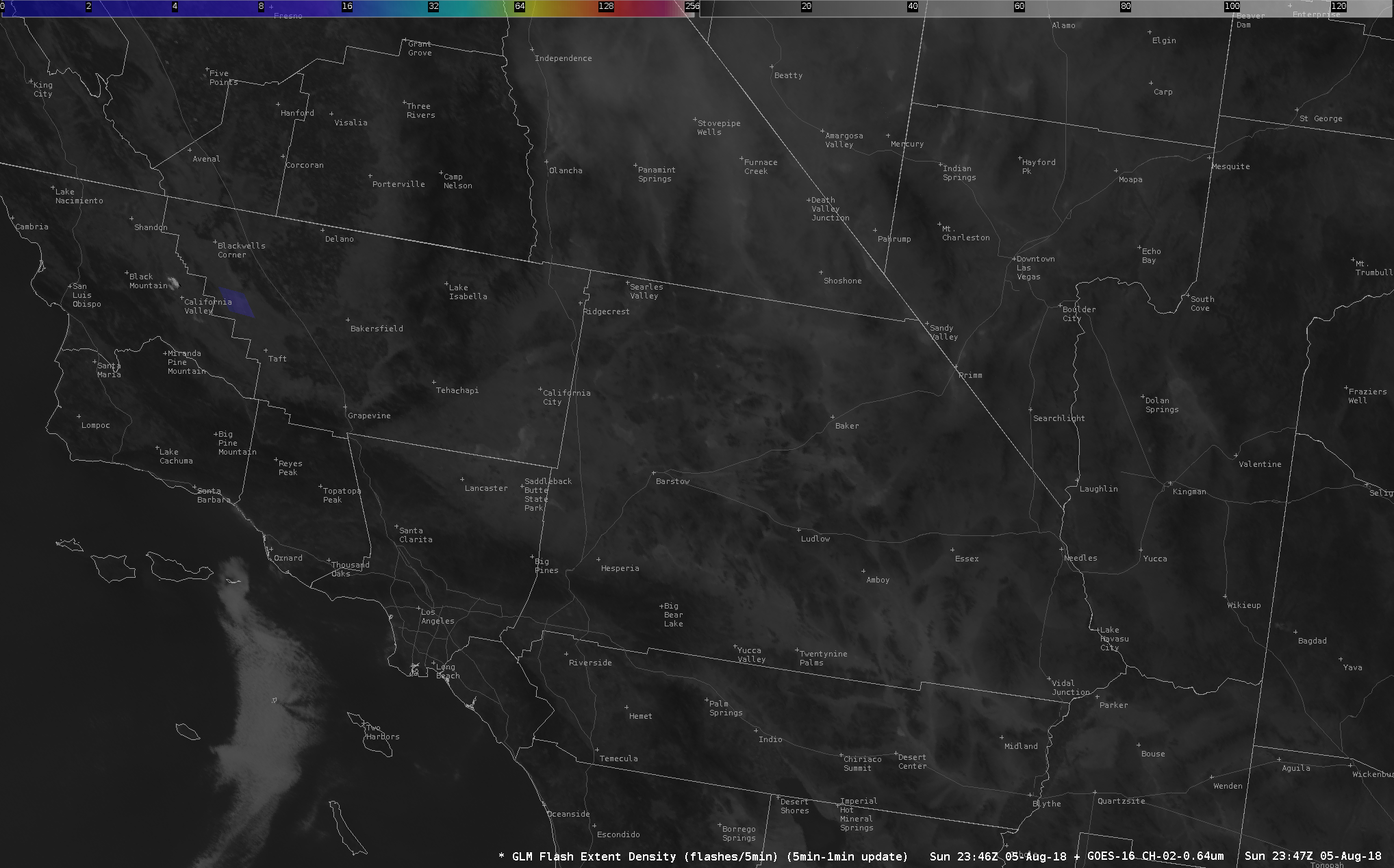Because the GLM is an optical detector and looks for changes in brightness over a certain time interval, there will be times that sun glint off of various objects will result in a false detection. For the most part, the processing algorithms will filter out false detections but every once in a while something will make it through. 99% of the time, this won't impact operations but as other applications are developed that use the GLM, it will be something that could crop up.
Saturday August the 5th at 22:52 UTC, clear skies were in place across southern California (other than the smoke from the numerous wildfires across the west). Just west of Blythe, CA we see a first glint of sun off of a solar array located southwest of the Airport. This was properly filtered out and there was no GLM detection:

Between 22:57 UTC and 23:17 UTC, there was increasing glint off of the series of solar farms between Lancaster and Grapevine, CA. The GLM finally registered this as a flash in the 23:18 UTC Flash Extent Density (along with Flash Area and Flash Energy, not shown in these examples):

The Flash Extent Density did register increasing values as the glint off the solar farm continued to increase in intensity all the way until 23:22 UTC before tapering off after this time. Also note the increasing brightness in the 0.64 micron ("Red" Channel) between Black Mountain and California Valley (east of San Luis Obispo) as the sun angle starts to reflect off of the Topaz Solar Farm:

It takes another 15 minutes before the GLM starts to register a flash with the glint off of the Topaz Solar Farm. By 23:37 UTC, the glint off the farm had become quite bright but the GLM has a significant difference from the earlier examples; there are TWO areas of false detections:
 The "eastern" detection continues to increase in Density while also moving east with time:
The "eastern" detection continues to increase in Density while also moving east with time:
 And the last detection is at 23:46; a full 9 minutes after the initial false GLM flash:
And the last detection is at 23:46; a full 9 minutes after the initial false GLM flash:

So, why is this important to keep in mind? As more people look at the GLM data and start to develop algorithms to display this data, the old adage of "Garbage in, garbage out" comes to mind. These false flashes were pretty persistent in time. The second example even moved with time. If a computer can't discern those as a false detection, will it be mapped as a missing CG in the ground networks or will lightning probabilities in the short-term models be biased?
Another thing to consider is Decision Support Services; how will someone handle this because lightning + largest solar array in California that provides 23% capacity factor to their grid = (to quote Dennis Hopper in one of his Nike commercials) "Bad things man. I mean. Bad. Things!" If it is reported as a potential hazard to their electrical infrastructure, who knows what the impacts will be.